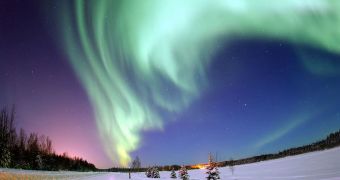Many tourists visiting various locations where the Northern Lights are advertised as a possibility ask guides when the atmospheric events will “be turned on.” According to experts, guides may soon find it easier to answer this question with a higher degree of certainty. Astrophysicists know that the Sun plays a huge role in the amount of lights forming in the upper layers of the planet's atmosphere. Now, as the star becomes more active, the number of occasions in which the Aurora Borealis will become visible could increase considerably, the BBC News reports.
The Sun works in 11-year cycles, which means that periods of minimum – when solar flares and sunspots occur rarely – alternate with periods of intense solar activity. At this point, with a bit of delay, the star is beginning to exhibit more sunspots, which means that the chance of solar flares is increasing. As the radiation slams into the Earth's magnetic field over the poles, particles start flowing along its lines, causing the curtain-like appearance that many auroras have. The strength of the solar flare hitting the field determines the intensity and brightness of the lights people see from down on the ground.
“The Sun's activity varies with an 11-year cycle and when it is more active there are more eruptions from the Sun called coronal mass ejections – some of which are related to flares. When they reach the Earth after about two days they produce an enhanced Aurora Borealis. In order to see it clearly you need to be away from lights and also as far north as possible, and so on those two counts Scotland is a great place to see the aurora,” University of St. Andrews Solar and Magnetospheric Research Group expert Eric Priest says.
“We have been in one of the deepest sunspot minima for the last couple of years, 2008 was the second blankest year in a century, and for lovers of the Northern Lights this has been a lean period indeed. Sunspot activity appears to be linked to the frequency and intensity of the beautiful aurora. In autumn 2004 and winter 2005 there was a tremendous burst of intense aurora activity. In 2005 the activity was so intense that the aurora activity was directly above the Scottish Highlands and we were able to look into the auroral corona itself,” Highlands Astronomical Society scientist Eric Walker adds.
Determining the exact correlations that form between the Sun and the Earth when auroras appear will become a lot easier once the Solar Dynamics Observatory, NASA's new Sun-observing telescope, will start transmitting data on the scientific observations it conducts. The instrument is equipped with numerous detectors that are sensible to the variations the star exhibits in extreme ultraviolet wavelengths, where it is mostly active.

 14 DAY TRIAL //
14 DAY TRIAL //